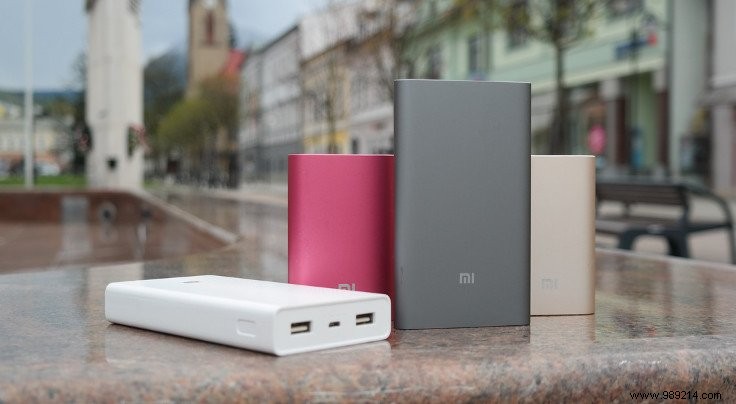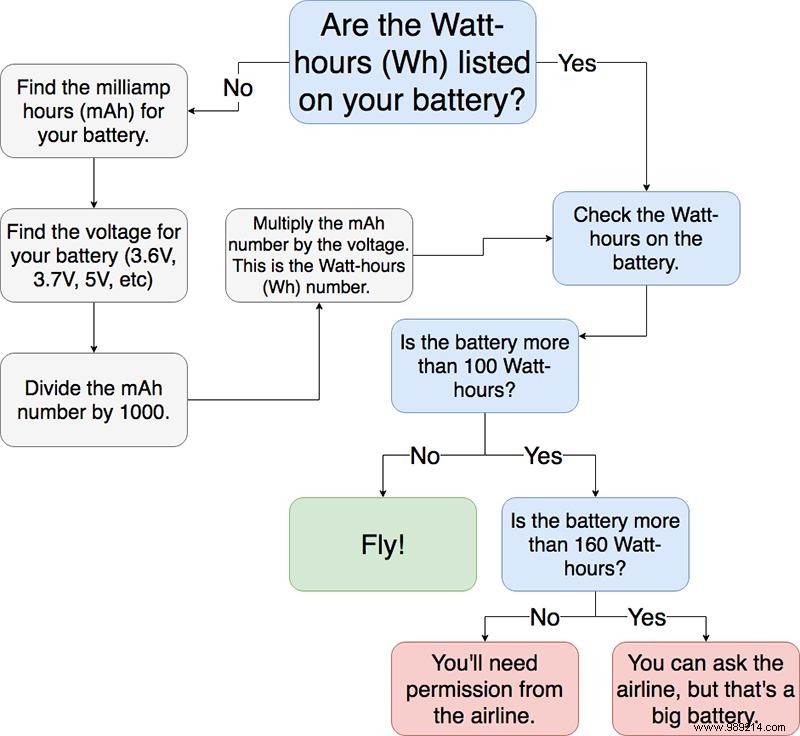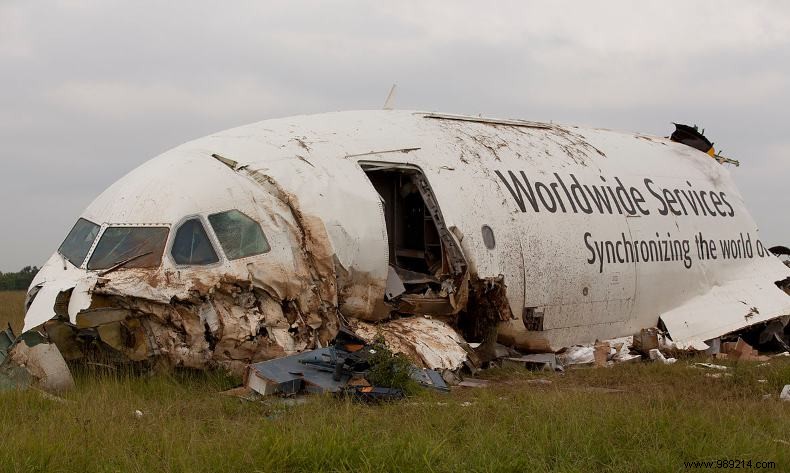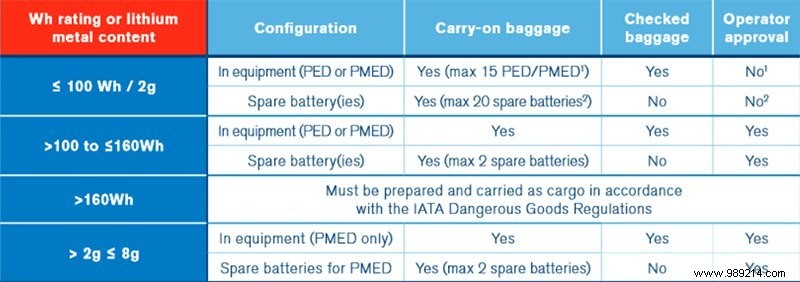Having a little extra juice for your phone always comes in handy, especially when you're about to land in a new city or country. However, if you plan to bring an extra power bank or batteries on the plane, you should probably check their specs first:not everything flies. Carrying extra-large power banks or many smaller ones can be a bit risky for the plane, especially if the batteries are in the cargo hold where fires can't be managed as easily.
ContentsLocation, location, locationGo small or go homeGo big without going homeThe flowchartHow dangerous are they really?Final checklistIf you already have a good idea of what Wh and mAh are, you can jump to the flowchart for a quick guide.
If you're curious if a power bank is allowed on a flight, the answer is yes, although it's not that simple.

Putting your batteries in your carry-on is easy enough, but it might not be enough to get you through security if you're packing a power source that could power a small village. Most power supplies are usually below the 100 watt-hour (Wh) limit, but it's still a good idea to check.
You may have noticed that your power supply doesn't measure its output in watt-hours — it's probably using milliamp-hours, or mAh. Many power supplies also have the watt-hours listed somewhere, but in case they don't, here's the formula for converting between units:
1. Find the mAh number (probably between 1 and 30,000)
2. Find the voltage (usually 3.6V/3.7V)
3. Divide the mAh number by 1000, converting it to Amp-hours (Ah)
4. Multiply the Ah number by the voltage to get the watt hours.
The complete formula:

For example, a 20,000 mAh power supply with a 3.6 V rating would be:(20,000 / 1,000 ) * 3.6 =72 watt-hours.
While PSUs come in a variety of wattages and voltages, an average 3.6V PSU would need to be around 28,000mAh before going over the 100Wh limit. As long as you see "3.6V" or "3.7V" and a number less than 28,000mAh, there's a good chance your battery is aircraft compatible.

However, if you happen to have a larger power bank, there's always a good chance you can bring it with you. Batteries with a capacity of 100.1 to 160 Wh simply require airline approval to be taken on board an aircraft. There isn't really a set procedure for flying with these batteries, so you probably won't see it as a baggage option, but calling your airline and asking a rep will get you the answer you need. P>
For reference, 160 Wh is roughly equivalent to 44,000 mAh at 3.6 volts.
Anything over 160Wh could cause you problems as it has to follow dangerous goods guidelines. Luckily, it's pretty hard to find a power bank that exceeds this limit, and if you have one, you'd probably know it.
If you just need a quick reference, here's a flowchart:


If you accidentally took an oversized battery on a flight or left one in your checked baggage, it's not likely to cause a disaster, but the risk of a disaster is not zero. A quick search for "battery exploding on plane" will bring up many cases, although usually these fires were quickly put out.
The only confirmed battery-related disaster was a UPS plane in 2010 that crashed at Dubai International Airport after a fire caused by a shipment of lithium batteries. This accident is one of the main reasons why there are restrictions on passengers carrying lithium batteries, and UPS now transports this type of cargo in special fiberglass containers.
There's even an (unsubstantiated) hypothesis that a shipment of lithium-ion batteries was responsible for the disappearance of MH370 in 2014. If there's not much to panic about for the average passenger, might as well do your departs to make sure your plane gets to its destination safely.

In the end, all you need to know to avoid in-flight power mishaps is:
Armed with these two pieces of information, you should be able to have a good, relaxing flight in your high-speed metal tube flying several miles above the ground.